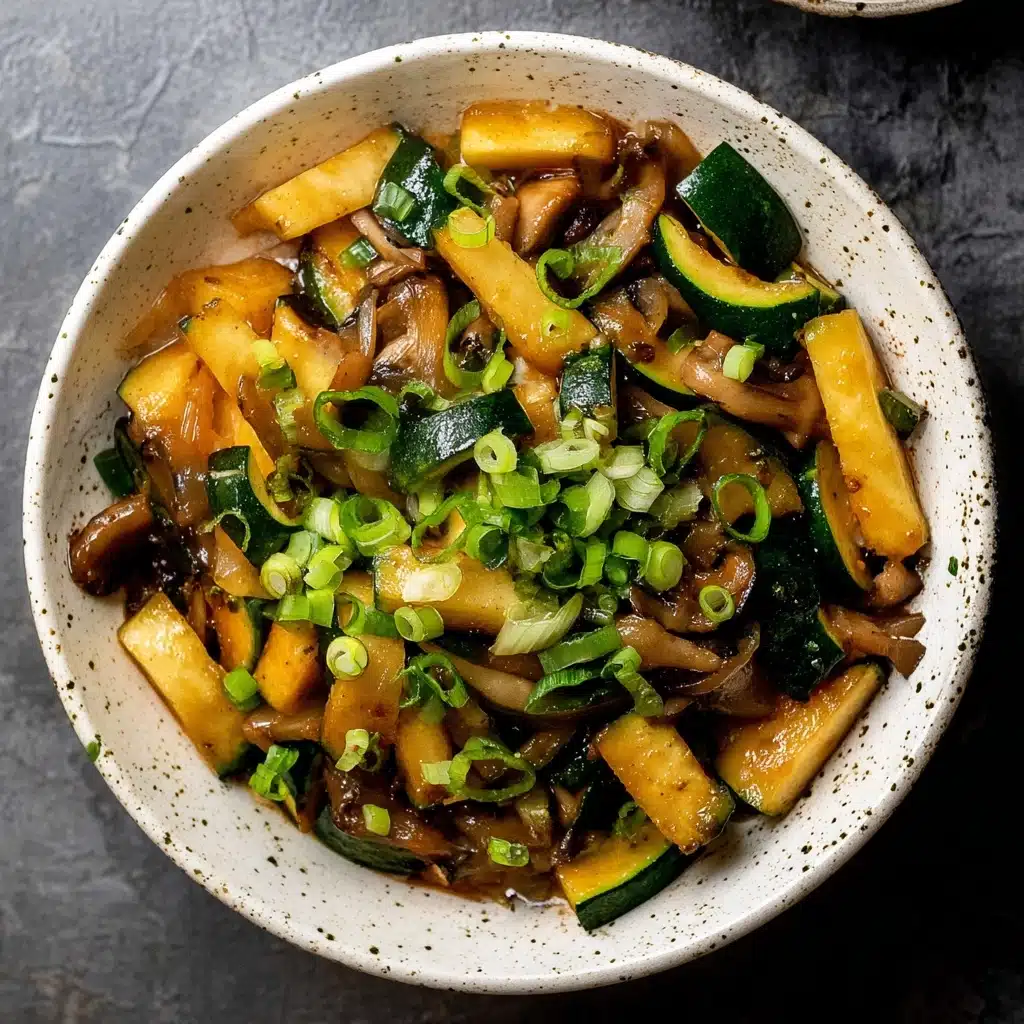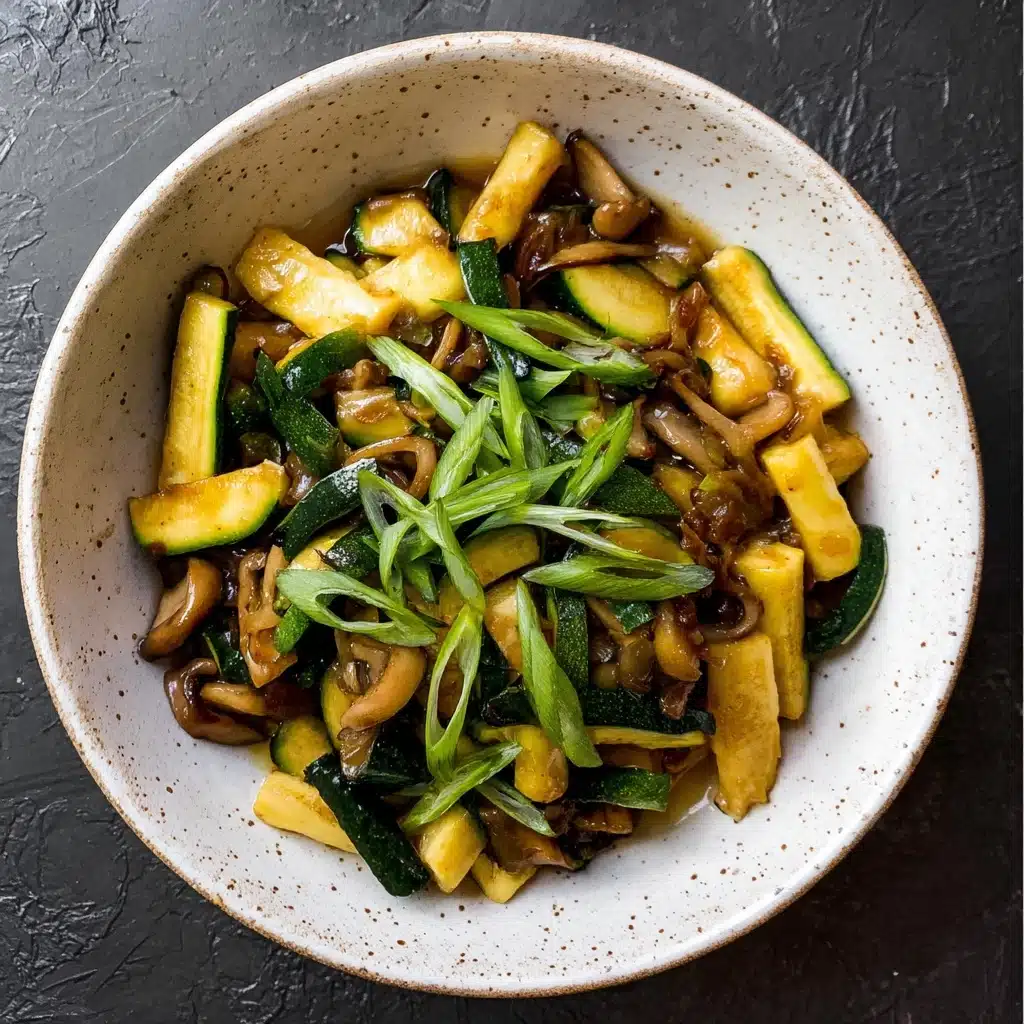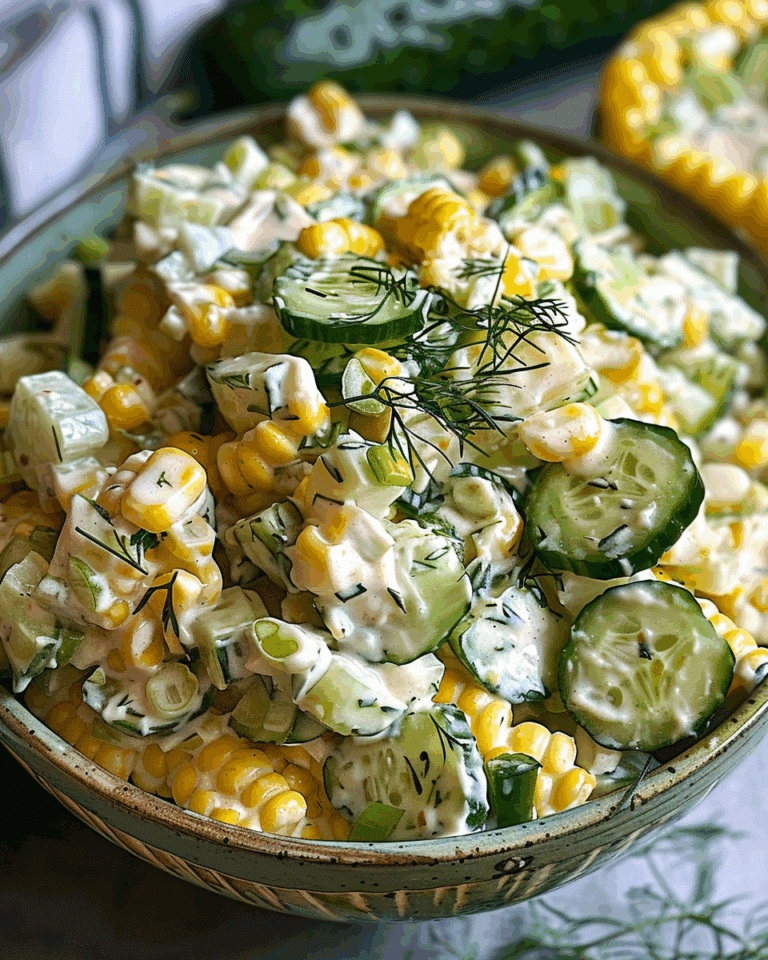Imagine a sizzling platter loaded with glistening onions, tender squash, meaty mushrooms, and a burst of savory flavor—Hibachi Vegetables are the unsung heroes of Japanese-American cuisine, bringing vibrant color and irresistible aroma to any table. This quick and easy side dish isn’t just about keeping things light; it’s about transforming simple veggies into a dazzling showstopper, filled with buttery richness and a hint of umami from soy sauce. Whether you’re making them as a side for weeknight dinners or serving guests at a backyard cookout, Hibachi Vegetables will steal the spotlight!

Ingredients You’ll Need
With just a handful of familiar ingredients, you can create Hibachi Vegetables that rival any restaurant. Each element is thoughtfully chosen—some for depth and umami, others for brightness and crunch—coming together for an irresistible medley you’ll want to make again and again.
- Butter: Brings richness and helps the vegetables develop those beautiful golden edges.
- Vegetable oil or olive oil: Prevents burning while balancing the flavor and boosting that classic hibachi sizzle.
- Onion (1 cup, quartered and thinly sliced): Adds sweetness and depth as it caramelizes.
- Zucchini (2 cups, cut into strips): Soaks up all the garlic butter flavor and keeps things fresh and light.
- Yellow squash (2 cups, cut into strips): Offers buttery texture and a pop of sunny color.
- Mushrooms (1 cup, sliced): Bring earthiness and a meaty bite to the medley.
- Soy sauce (2 teaspoons): Delivers that crucial punch of umami and saltiness.
- Salt (1/4 teaspoon): Highlights each vegetable’s natural sweetness.
- Ground black pepper (1/4 teaspoon): Adds gentle heat to round out the flavors.
How to Make Hibachi Vegetables
Step 1: Heat Your Pan
Start by heating your wok or a large skillet over medium-high heat. The pan needs to be hot enough to create that signature sizzle—it’s what gives Hibachi Vegetables their lightly charred, caramelized edges. Add in the butter first and let it melt completely before pouring in the oil; this combination keeps the butter from burning while lending a glossy sheen to the finished veggies.
Step 2: Sauté the Onions
Toss in your sliced onions and sauté them for about 2 minutes. You’re looking for a little softness and that enticing translucent look. The onions will start to release their sweetness, becoming the aromatic foundation for the rest of the Hibachi Vegetables.
Step 3: Add the Zucchini, Squash, and Mushrooms
Next, pile in the zucchini, yellow squash, and mushrooms. Stir everything well so each veggie gets a chance to soak up that flavorful base. These vegetables have different textures but will begin to cook down together, absorbing all the buttery goodness and taking on a lovely golden hue.
Step 4: Season and Stir
Now it’s time to bring the magic! Add the soy sauce, salt, and ground black pepper straight into the pan. Continue stirring frequently—this not only ensures even cooking but also builds up layers of flavor as the soy sauce hits the hot pan and caramelizes ever so slightly. Cook until the vegetables reach your desired tenderness (about 10 minutes is just right for crisp-tender perfection).
Step 5: Serve Warm
Scoop your Hibachi Vegetables straight from the wok to the serving plate while they’re still steaming hot. Every forkful should be glistening with flavor, ready to anchor your meal or shine as a vibrant side.
How to Serve Hibachi Vegetables

Garnishes
Hibachi Vegetables are delicious as is, but a final flourish can elevate them even more. Try a sprinkle of sesame seeds, a handful of thinly sliced scallions, or a pop of bright red pepper flakes if you like a little heat. Sometimes just a squeeze of lemon gives them an extra burst of freshness!
Side Dishes
They pair beautifully with hibachi-style fried rice, classic steamed white rice, or even noodles. Don’t forget a dollop of yum yum sauce or gingery dipping sauce for dunking—these are the perfect accompaniments for the umami-rich vegetables.
Creative Ways to Present
Looking to impress? Serve your Hibachi Vegetables on a sizzling platter for that “restaurant wow” factor, or pile them high into lettuce cups for a fresh, hand-held twist. You can also mix them into grain bowls, toss with soba noodles, or spoon over grilled protein for a complete meal.
Make Ahead and Storage
Storing Leftovers
Leftover Hibachi Vegetables keep well in the fridge for up to three days. Just cool them completely before transferring them to an airtight container—you’ll maintain maximum freshness and texture this way.
Freezing
While you technically can freeze Hibachi Vegetables, the texture of zucchini and squash can get a bit soft after thawing. If you do freeze them, use freezer bags and squeeze out as much air as possible to reduce ice crystals. Reheat straight from frozen for best results.
Reheating
To bring back their just-cooked magic, reheat Hibachi Vegetables in a hot skillet with a splash of oil or water. This helps revive the flavor and keeps the vegetables from turning soggy or mushy—avoid microwaving if you love a little crispness!
FAQs
Can I use different vegetables in my Hibachi Vegetables?
Absolutely! Feel free to mix and match with what you have on hand. Broccoli, carrots, bell peppers, or snap peas all work well—just cut them into similar-sized pieces for even cooking.
What’s the secret to getting that restaurant-style flavor?
Using both butter and oil is key, as is letting the vegetables really sear in a hot wok or skillet. Don’t overcrowd the pan and don’t rush the process—those golden edges make all the difference!
Can I make Hibachi Vegetables vegan?
Definitely! Simply swap the butter for a plant-based alternative or another tablespoon of oil. Make sure your soy sauce is vegan as well, and you’ll have a dish everyone can enjoy.
How can I add more flavor without increasing sodium?
Try adding minced fresh garlic, ginger, or a splash of citrus for brightness. Toasted sesame oil added at the end gives a huge flavor boost with minimal extra salt.
Are Hibachi Vegetables good for meal prep?
Yes, they’re perfect for meal prep! Store them in individual containers and pair with rice, noodles, or your favorite protein for quick, healthy lunches all week long.
Final Thoughts
Hibachi Vegetables are proof that a handful of simple ingredients can create something truly incredible. If you’ve never tried making them at home, this is your sign—give them a go, and watch everyone at the table come back for seconds!
Print
Hibachi Vegetables Recipe
- Total Time: 30 minutes
- Yield: 4 servings
- Diet: Vegetarian
Description
Delight your taste buds with these savory hibachi vegetables that are bursting with flavor and nutrients. This easy recipe brings the sizzle of a hibachi grill right to your kitchen. Perfect as a side dish for any meal or as a standalone healthy option.
Ingredients
For the Hibachi Vegetables:
- 1 tablespoon butter
- 2 tablespoons vegetable oil or olive oil
- 1 cup onion, quartered and thinly sliced
- 2 cups zucchini, cut into strips
- 2 cups yellow squash, cut into strips
- 1 cup mushrooms, sliced
- 2 teaspoons soy sauce
- ¼ teaspoon salt
- ¼ teaspoon ground black pepper
Instructions
- Heat the Wok or Skillet: Start by heating the wok or large skillet over medium-high heat. Add butter and oil.
- Saute Onions: Add sliced onions and sauté until they begin to soften.
- Add Vegetables: Include zucchini, yellow squash, and mushrooms.
- Season: Mix in soy sauce, salt, and pepper. Cook until vegetables reach desired tenderness.
- Serve: Enjoy these hibachi vegetables warm with fried rice and yum yum sauce.
- Prep Time: 15 minutes
- Cook Time: 15 minutes
- Category: Side Dish
- Method: Stovetop
- Cuisine: Japanese
Nutrition
- Serving Size: 1 serving
- Calories: 128 kcal
- Sugar: 5g
- Sodium: 344mg
- Fat: 10g
- Saturated Fat: 3g
- Unsaturated Fat: 6g
- Trans Fat: 0.2g
- Carbohydrates: 9g
- Fiber: 2g
- Protein: 3g
- Cholesterol: 8mg







